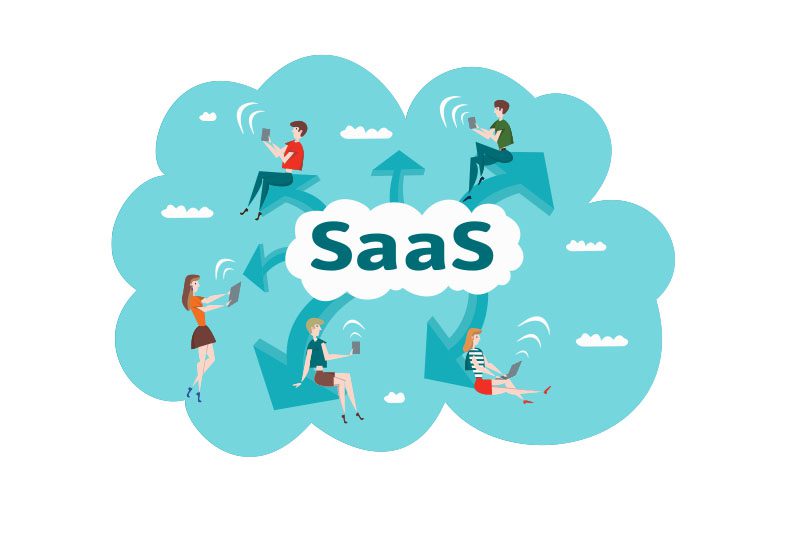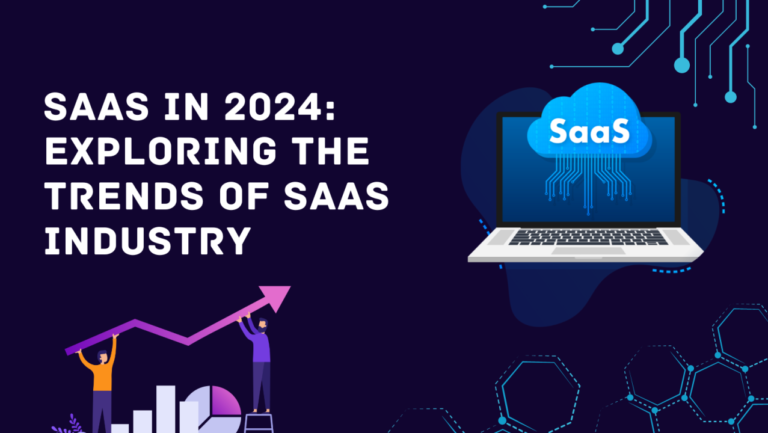Hey tech enthusiasts! Ready to embark on a journey into the dynamic world of software development and discover the game-changing wonders of Microservices Architecture? Buckle up because we’re about to dive deep into the tech ocean and explore how microservices can be the secret sauce to revolutionizing your SaaS game!
Creating top-notch Software-as-a-Service (SaaS) solutions has become the gold standard in the ever-evolving realm of software development. Picture this – software engineers and architects, like modern-day wizards, are conjuring up innovative ways to build applications that are not just scalable but flexible enough to meet the ever-growing demands of users and businesses.

And leading the charge in this tech revolution? Microservices Architecture! In this blog post, we’re peeling back the layers of this powerful approach, unraveling its mysteries, and exploring how it can transform the very fabric of SaaS development and delivery.
Hold on, before we zoom into the microservices galaxy, let’s talk about the sheer explosion of SaaS on the global stage. According to GlobeNewswire, the SaaS market is on track to hit a mind-boggling $720 billion by 2028, boasting a whopping 25.89% Compound Annual Growth Rate (CAGR). Now, that’s not just growth; it’s a tech revolution in the making!

As a SaaS business owner, you’ve probably ridden the rollercoaster of scaling – the exhilaration, the challenges, and the unique intricacies of this beast. SaaS scaling isn’t your run-of-the-mill business growth; it’s a different ballgame with its own set of rules.
Sure, SaaS companies enjoy perks like lower startup costs, recurring revenue, and scalability. Let’s not sugarcoat it – there are hurdles too. Customer acquisition costs and the dreaded churn rate are part of the SaaS game.
But fear not! we’re diving into the nitty-gritty. So, join us as we unravel the magic of microservices and navigate the exciting landscape where SaaS meets scalability, flexibility, and the future of software development!
Decoding Microservices
So, what’s the buzz about microservices? In recent years, it’s become the rockstar of software design, stealing the spotlight for its ability to supercharge scalability, flexibility, and turbocharge development cycles. Imagine it as the superhero cape for your software applications!
Now, let’s break it down in simple terms. Microservices architecture is like playing Lego with your software. Instead of one massive and intricate structure, you’re breaking it down into smaller, more manageable pieces – each with its own superpower and specific task. These pieces chat with each other, team up, and voila, your job is done!
But here’s the real kicker – microservices aren’t just a design shift; they’re a revolution. It’s a complete transformation in how we think about, create, and run software. It’s not just about making things pretty; it’s about resilience, scalability, and agility in the ever-evolving digital landscape.

Think of it as upgrading your software from a clunky old car to a sleek, high-performance machine. By tackling each challenge with meticulous detail and strategic solutions, organizations can glide through this transformative journey with confidence. The result? A software system that’s not just resilient and scalable but also agile enough to dance through the demands of the digital age.
So, whether you’re a tech wizard or just dipping your toes into the vast ocean of software, join us on this exhilarating ride as we demystify microservices and explore the boundless possibilities they bring!
The Rise of Software as a Service (SaaS)
The cloud isn’t just a fluffy, dreamy concept; it’s a powerhouse that opens the doors to instant, affordable access to infrastructure at scales that were once deemed impossible. It’s like having a tech genie at your service, ready to make your development wishes come true!
Picture this: the tech universe shifted, and it’s all thanks to the cloud. Why is SaaS a game-changer, you ask? Well, get ready for a rollercoaster of insights as we explore the benefits that have businesses and end-users alike cheering for this tech marvel.

As businesses dance to the beat of constant change and agility, traditional monolithic architectures have faced a serious workout. Enter the stage – microservices-based applications. These bad boys bring high performance, cost-effectiveness, and independent lifecycle management to the table, all thanks to the agility of the cloud. It’s a revolution, and we’re here for it!
Imagine a world where developers wield a comprehensive microservices platform like a magic wand, creating applications that not only support massive scale but also dance gracefully between public and private clouds. It’s a symphony of high availability, cost-effectiveness, and performance, all powered by the cloud.
Architecture Matters: Microservices in Action
So, what’s the fuss about microservices? Picture this: the goal is to break down the once-mighty monolith into sub-systems, each with a specific responsibility – a service of its own. It’s like turning a colossal Titanic into a thriving small town, complete with buildings, houses, and apartments, each playing its role in harmony.
Now, the key to microservices lies in teams’ autonomy. Think of it as giving each building in our small town its unique identity and autonomy. These microservices are relatively small, with their lifecycle – from build to maintenance and scalability. The team behind each one can dance to its rhythm, using the tech stack of their choice and defining their practices.

But, of course, no adventure is without challenges! Teams grapple with cross-service interactions, deployment intricacies, and the need for monitoring and observability. It’s like managing a bustling small town where everyone needs to collaborate seamlessly.
To put it in perspective, a monolith system is your Titanic – massive and all in one boat. In the microservices world, it’s like our small town – charming but distributed. While it may pose challenges, tools like APM, ESB, and API gateway act as the guiding stars, offering visibility and control.
The Nuts and Bolts: Implementing Microservices
It’s time to dig in and learn the specifics of microservices implementation now that we have a basic grasp of them and how they work in tandem with Software as a Service (SaaS). This chapter will act as your manual for implementing microservices and creating a reliable SaaS application.
- Choosing the Right Tools and Frameworks: Sarah, a junior developer, evaluates and chooses popular tools like Docker, Kubernetes, and Spring Boot for her microservices project, considering factors like scalability and ease of deployment.
- Designing Microservices Architecture: Microservices architecture involves breaking down applications into smaller, deployable services, utilizing RESTful APIs or messaging protocols like Kafka, and emphasizing clear service boundaries.
- Implementing Communication Between Microservices: Alex, a tech entrepreneur, navigates inter-service communication challenges to ensure reliability and fault tolerance in microservices, using tools like RabbitMQ for synchronous HTTP/REST or asynchronous messaging.
- Ensuring Fault Tolerance and Resilience: Mia, a DevOps engineer, shares her experience of implementing fallback mechanisms and circuit breakers to ensure fault tolerance and resilience in microservices architecture.
- Continuous Integration and Deployment (CI/CD): Emily’s journey involves setting up a robust CI/CD pipeline, ensuring efficient testing and deployment of microservices, and utilizing principles of CI/CD and tools like Jenkins or GitLab CI.
- Security Considerations in Microservices: Explore best practices for securing microservices architecture, including API security, identity management, and encryption, with Jake, a cybersecurity expert, enhancing security measures for a sensitive SaaS project.

Challenges and Solutions
Difficulties are an inherent part of the dynamic world of Software as a Service (SaaS) and microservices. Understanding the potential obstacles and, more crucially, the creative solutions that might lead to success is crucial as we work our way through the intricacies. We will examine frequent problems that developers, architects, and teams using microservices and SaaS encounter in this chapter and provide workable fixes.
- Data Consistency in a Distributed Environment: Mia, a DevOps engineer, discusses overcoming data consistency challenges in a high-traffic SaaS application by implementing strategies like Event Sourcing and leveraging distributed transaction patterns.
- Microservices Testing and Debugging: Sarah, a junior developer, navigates the intricacies of microservices testing and debugging, utilizing comprehensive testing strategies, continuous monitoring, and logging.
- Communication Between Microservices: Alex, a tech entrepreneur, discusses optimizing inter-service communication for his SaaS platform by utilizing well-defined APIs, service discovery mechanisms, and event-driven architectures.
- Security Challenges in a Microservices Landscape: Jake, a cybersecurity expert, discusses the challenges of securing microservices, including API security, identity management, and service vulnerabilities, and recommends implementing best practices and regular audits.
- Scaling Microservices Globally: James, a tech lead, successfully scales a SaaS platform globally, overcoming challenges like data consistency, latency, and user experience issues through Content Delivery Networks and smart load balancing.
- Upgrading and Evolving Microservices: Emily, a developer, manages her microservices-based SaaS application’s evolution using versioning strategies, blue-green deployments, and API contracts to ensure backward compatibility.

Future Trends and Innovations
It’s critical to look forward and predict the trends and developments that will influence the landscape as we stand at the intersection of microservices and Software as a Service (SaaS). This chapter will examine the state-of-the-art developments, upcoming technologies, and creative approaches that are reshaping the microservices and SaaS industries.
- Serverless Computing:
Future Trend: Meet Sarah, a forward-thinking developer embracing serverless architecture for seamless microservices deployment.
Innovation: Discover the efficiency, cost savings, and faster time to market promised by serverless computing and its impact on SaaS applications.
- Edge Computing:
Future Trend: Join Alex, a tech entrepreneur exploring the possibilities of edge computing in his microservices-based SaaS platform.
Innovation: Uncover how edge computing revolutionizes user experience and data processing, especially in scenarios where low latency is critical.
- AI and Machine Learning Integration:
Future Trend: Walk alongside Mia, a DevOps engineer, as she incorporates AI-driven microservices into a SaaS project.
Innovation: Explore the potential of AI and ML to drive innovation in microservices, from intelligent decision-making to predictive analytics.
- Blockchain for Microservices Security:
Future Trend: Join Jake, a cybersecurity expert, as he explores the integration of blockchain in securing microservices in a SaaS application.
Innovation: Discover how blockchain mitigates security challenges and builds trust in distributed systems.
- Event-Driven Microservices:
Future Trend: Accompany Mike, a seasoned architect, as he architects an event-driven microservices system for a large-scale SaaS application.
Innovation: Explore how events streamline communication and drive innovation in distributed systems.
- Low-Code/No-Code Platforms:
Future Trend: Dive into Emily’s journey as she explores low-code platforms to build microservices in a SaaS project.
Innovation: Witness how these platforms democratize development, fostering collaboration between technical and non-technical stakeholders.
- Micro Frontends:
Future Trend: Join Jessica, a project manager, as she embraces micro frontends to enhance the user interface of a SaaS application.
Innovation: Explore how this approach simplifies front-end development and fosters collaboration between front-end and back-end teams.
- Autonomous Microservices:
Future Trend: Follow James, a tech lead, as he implements autonomous microservices in a mission-critical SaaS application.
Innovation: Explore how autonomous microservices contribute to system stability and responsiveness.
In the genesis of this exploration, we witnessed the birth of ideas blossoming into innovative microservices architectures, akin to a magician conjuring spells to shape reality. The power of microservices lies not only in their ability to scale and adapt but also in the autonomy they provide to developers, architects, and teams. Each microservice, a magical entity in its own right, contributes to the grand symphony of a SaaS application, harmonizing with others to create a seamless and dynamic user experience.
The prosaic tasks of design patterns, from the grandeur of the Singleton pattern to the finesse of the Abstract Factory pattern, acted as the incantations guiding the creation of microservices with precision and elegance. Each pattern, a tool in the magician’s kit, allowed developers to craft scalable and maintainable systems, ensuring the longevity and robustness of their magical creations.
Yet, as with any magical journey, challenges arose on the path. The dragons of data consistency, communication complexities, and security vulnerabilities threatened to disrupt the harmony. However, the wizards and sorceresses of the tech world, armed with innovative solutions, faced these challenges head-on. They implemented strategies like event sourcing, embraced serverless computing, and harnessed the power of AI and machine learning to overcome adversities and emerge victorious.
The future, as foretold in the scrolls of emerging trends and innovations, promises even greater enchantment. Serverless computing emerges as the phoenix, rising to revolutionize the way we think about infrastructure. Edge computing, AI, and blockchain weave into the fabric of microservices, adding layers of complexity and resilience. Low-code platforms, micro frontends, and autonomous microservices beckon, opening portals to a future where development becomes more accessible, interfaces more dynamic, and systems more adaptive.








